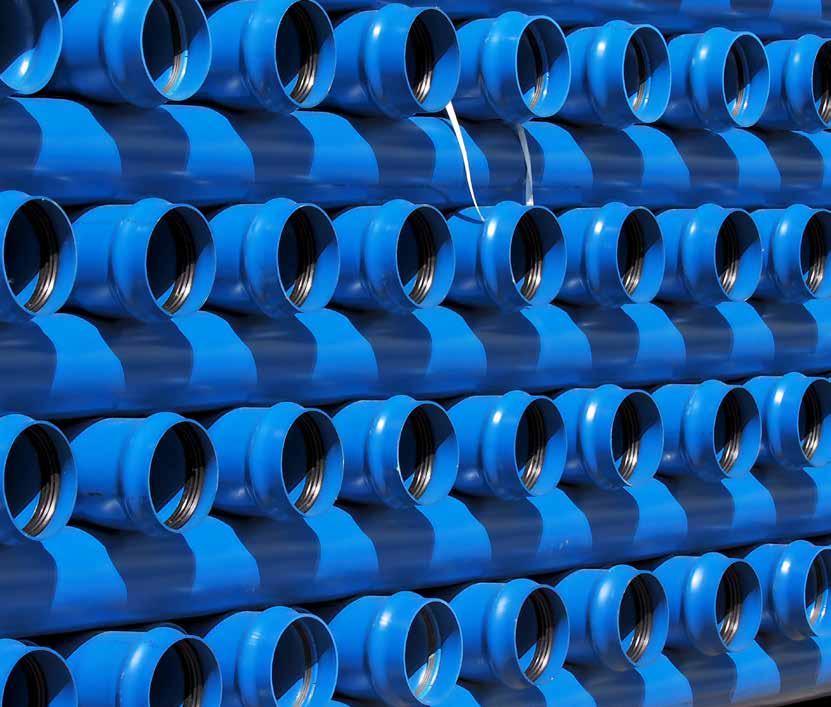
5 minute read
We need more than promises and rhetoric

South Africa’s National Water Week campaign takes place between 15 and 22 March, with the aim of educating the public about their responsibility in water conservation initiatives and raising awareness around the need to protect and conserve the country’s water resources.
Advertisement
By Jan Venter
While SAPPMA (Southern African Plastic Pipe Manufacturers
Association) applauds and supports the idea behind the campaign, its focus and impact should stretch much further than merely educational purposes. More than ever before, it needs to stimulate authorities into action.
South Africa is facing a water catastrophe that has been years in the making. Here are some frightening facts and figures: • The mean average rainfall for our country is only 495 mm per year – compared to the equivalent world figure of 860 mm. Roughly 21% of our country receives less than 200 mm precipitation per annum. • South Africa has less than 2 000 m3 of water per person per year, compared to 15 000 m3 in the USA. This is exacerbated by a massive and unplanned influx of people from all over Africa, which places severe stress on our resources.
Dr Anthony Turton, professor in the
Centre for Environmental Management at the University of the Free State, predicts that South Africa will need 1.6 times the amount of water than will naturally be available by 2030. • More than 50% of South Africa’s wetlands, known as nature’s water filters, have been lost. Of those that remain, 33% are in poor ecological condition. • According to the National Water and Sanitation Master Plan that was released in 2018, 56% of wastewater plants and 44% of water treatment works are in a poor or critical condition; 11% are completely dysfunctional. Three quarters of the water pumped back into rivers by municipal treatment plants has not been properly treated and contains harmful pathogens.

Jan Venter, CEO of SAPPMA
• Due to pollution, only 47% of our water bodies have good quality water, compared to Zimbabwe, which currently sits at 76%. • More than a third (about 35%) of the properly treated water that is finding its way back into distribution systems is lost due to theft or leakage due to poor infrastructure. This amounts to approximately 1 660 million m3 per year. In 2013, Trevor Balzer, in his position as acting director general of the Department of Water Affairs, stated that South Africa would need about R700 billion over the next 10 to 15 years to refurbish the nation’s water infrastructure and improve the supply situation. A year earlier, Edna Molewa, then the Minister of Water and Environmental Affairs, raised the possibility of attracting funds from foreign investors for the maintenance of the ageing water infrastructure, hinting at the possibility of partial privatisation of some treatment plants.
Today, almost a decade later, the government’s National and Sanitation Master Plan states that R33 billion per year for the next 10 years will be required to achieve water security. Although we have heard many statements and promises made over the past few years, we have unfortunately seen very little action.
Electricity and water crises linked
Our current electricity crisis is characterised by power cuts or load-shedding, which has become a regular occurrence. As a nation, we have adapted to this situation by way of standby generators, investing in solar panels or simply better planning our activities. Not many people realise, however, that there is a definite interdependence between water and energy.
Water is required to generate electricity, while a large portion of electricity is used to pump and distribute water. The cost and availability of electricity at present is therefore a big stumbling block to desalinate sea water, which would anyway only be economically available in coastal areas (estimated at 2 kWh/m3). Interrupted water supply will be catastrophic and clearly a totally different ball game to interrupted electricity supply.
Plastic pipes
Plastic pipes are dominant in secondary water distribution and SAPPMA represents more than 80% of all certified pipes produced in South Africa. We are therefore a key role player in water. Since we are a non-profit organisation, we work not only for the well-being of the plastics pipe industry, but also for the welfare of the people of the country.
SAPPMA is responsible for ensuring that the piping systems used in our country’s water distribution are designed, produced and installed in the best possible manner and in accordance with international and national standards. We make sure that plastic pipes have a long-term and leak-free life.
The message of SAPPMA during this year's Water Week is therefore an urgent appeal to government to give water and sewage infrastructure the high priority it deserves. We urge the department to only appoint people with the necessary engineering skills and experience into positions of authority and allow private industry to form partnerships with our public enterprises, so that we can secure our water supply for future generations.
Jan Venter, CEO of the Southern African Plastic Pipe Manufacturers Association (SAPPMA)
FLEXIBILITY IS STRENGTH
The ground is always subject to movement - slowly over a number of years due to settlement, or rapidly due to external events such as floods, temperature fluctuations, earthquakes and sinkholes.
BEING FLEXIBLE, PLASTIC PIPES ARE EMINENTLY SUITABLE IN • poor soil conditions • fluctuating temperatures • earthquakes • areas subject to sinkholes Invest in good quality plastic pipes bearing the SAPPMA mark of quality for peace of mind. These pipes have been locally produced and manufacturers undergo regular, independent auditing to confirm they meet stringent local and international standards.
When the pipes reach their end-of-life as water and sewer systems after 100+ years, it can be recycled and thereby play an important role in contributing to the circular economy. Visit www.sappma.co.za for more information.










